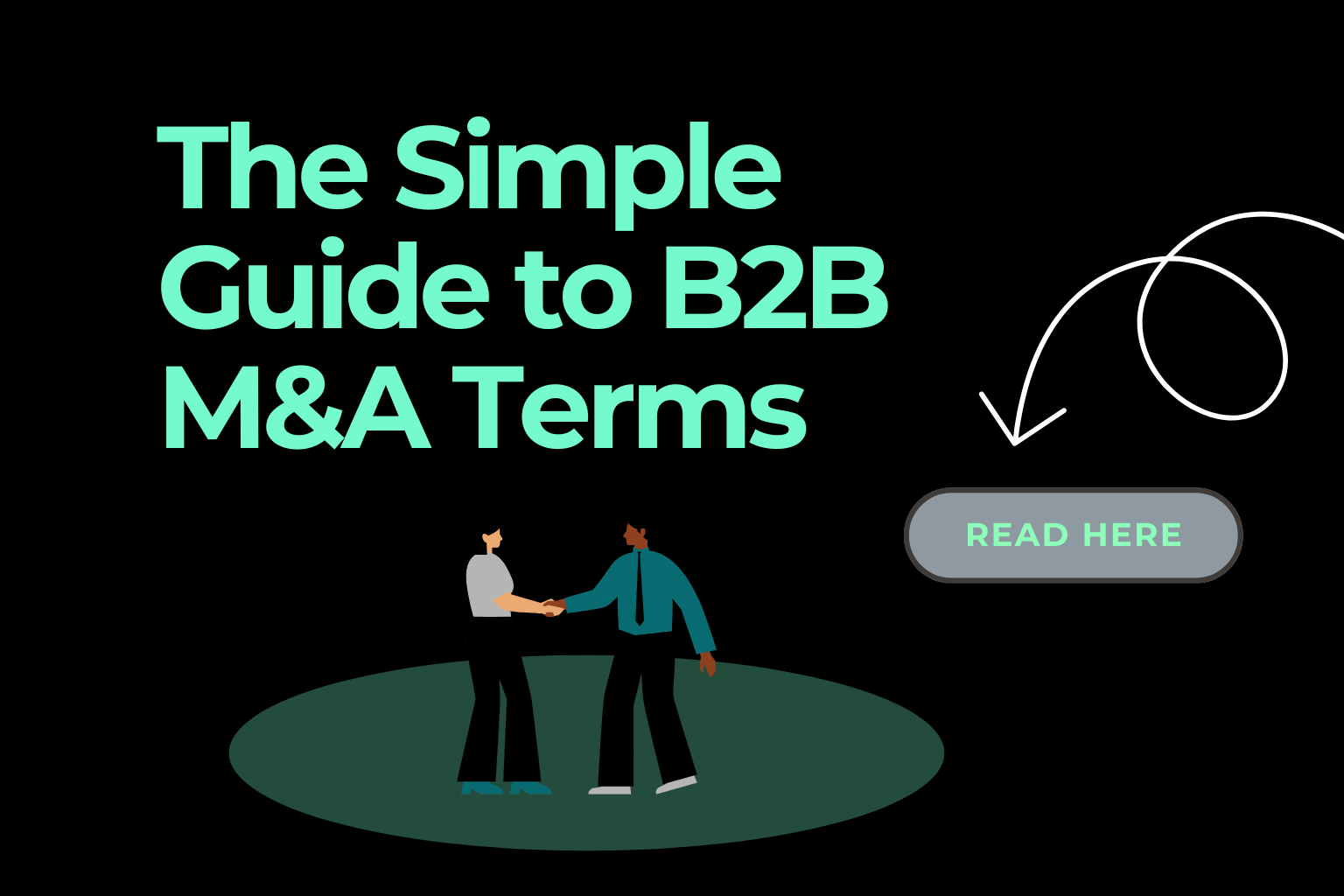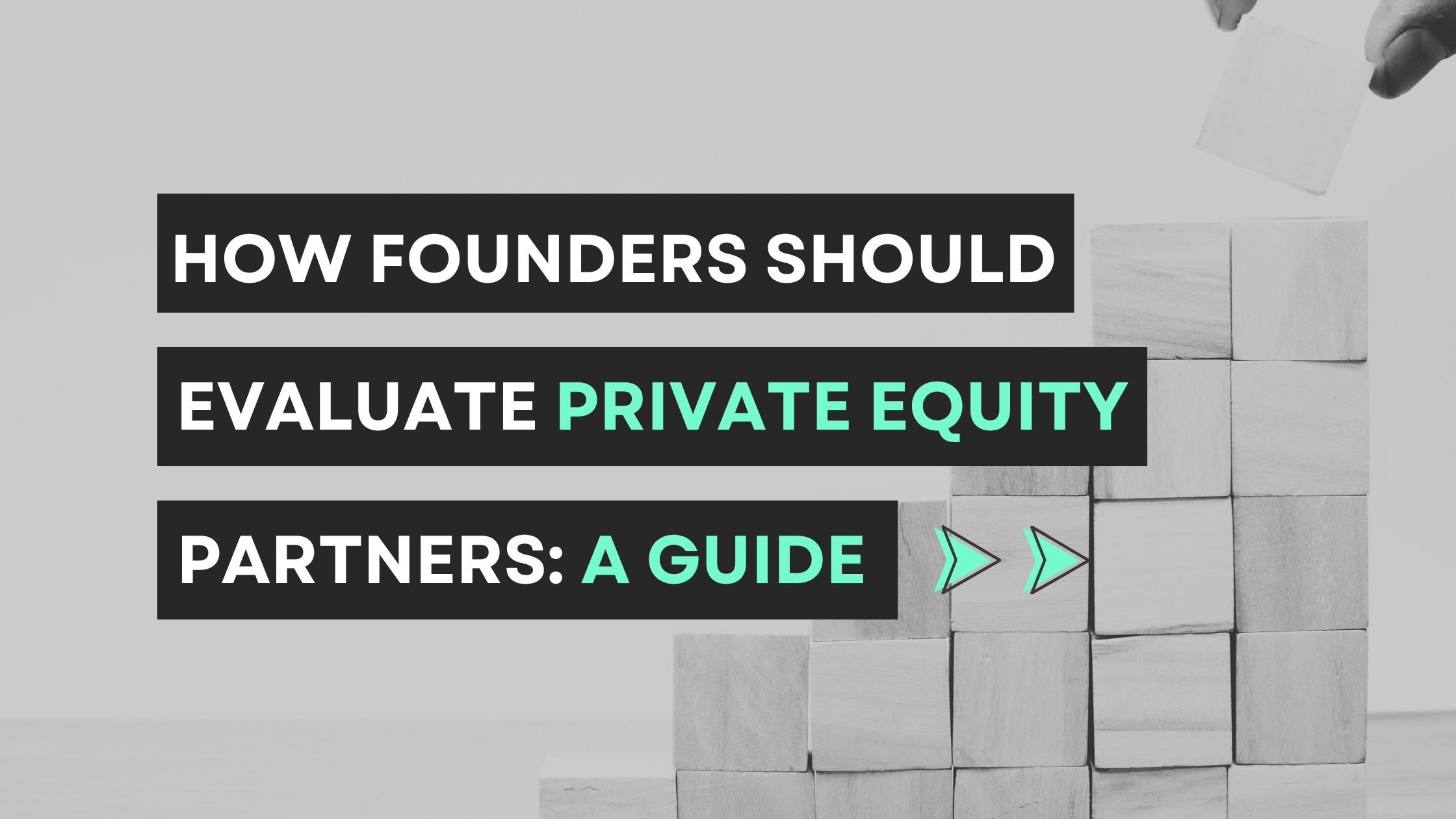A Founder-Friendly Glossary to Understand Deals, Valuation, Earn-Outs & Everything in Between
If you’re considering a sale, investment, partial exit, or simply want to understand how M&A works, the quickest way to feel overwhelmed is reading a term sheet or SPA for the first time.
Suddenly you’re in a new language: drag rights, working capital pegs, ratchets, locked box, roll-over equity…
And the industry doesn’t make it easy.
This guide is designed to be the simple, founder-first, jargon-free glossary I wish I’d had when I sold my first business. Every term is explained in plain English with examples, grouped into logical sections, and supported with simple diagrams to help the concepts land.
Table of Contents
- Deal Types
- Valuation & Price
- Deal Structure & Consideration
- Financial Adjustments
- Legal Protections
- Governance, Control & Shareholder Rights
- Post-Deal Obligations
- Private Equity Terms
- Process & Documentation
- People, Culture & Employment
1. DEAL TYPES
Asset Sale
The buyer picks which assets they want (brand, contracts, IP) and leaves liabilities behind.
Example: Buyer takes client contracts and staff but not an old office lease.
Share Sale
The buyer acquires shares in the company — everything transfers with it.
Example: This is how 95%+ of B2B agencies are sold.
Merger
Two companies combine to form a single entity.
Example: Two agencies merge to gain scale and pitch for larger accounts.
Roll-Up / Platform Play
A buyer acquires multiple small companies to build a larger group.
Management Buyout (MBO)
The management team buys the company, often via PE. Example: COO + CFO buy the agency as the founder steps back.
Management Buy-In (MBI)
External managers buy into the business and take over.
Example: A new CEO and team purchase the business and run it day-to-day.
Employee Ownership Trust (EOT)
Employees buy the business via a trust, funded from future profits.
Example: Founder sells 51% to a trust, gets paid gradually tax efficiently.
Strategic Acquisition
A buyer acquires you for capability or market advantage.
Example: Global network buys a specialist agency for capability gaps.
Financial Acquisition
A private equity fund buys primarily for return potential.
Example: PE buys a recurring-revenue consultancy to scale margins.
Acquihire
Buyer purchases team talent rather than the business itself.
Example: SaaS business acquires an agency only for its engineering team.
2. VALUATION & PRICE
EBITDA
Profit before interest, tax, depreciation, amortisation.
Example: If your EBITDA is £1m, and the buyer pays 6×, EV = £6m.
Adjusted EBITDA
EBITDA after removing one-offs and founder adjustments.
Example: Removing your £300k founder salary — adjusted EBITDA rises.
Enterprise Value (EV)
EV = EBITDA × Multiple.
Example: 1.2m EBITDA × 7 = £8.4m EV.
Equity Value
What founders actually receive after debt, cash and adjustments.
Example: EV = £8m, but after minus debt and working capital, equity paid = £6.5m.
Multiple
How many times EBITDA is paid.
Example: “This sector is trading at 6–8× EBITDA.”
Revenue Multiple
Used when profit is less relevant (SaaS).
Example: SaaS doing £2m ARR may sell for 4× = £8m valuation.
Discounted Cash Flow (DCF)
Values the business based on future cashflows. Useful for accounting but rarely used in deals below £50m.
Fair Market Value
Valuation based on what a typical buyer would pay. Used in shareholder disputes or buy-backs.
Market Comparables
Value based on similar deals.
Example: “Recent analytics agency deals were 7× EBITDA.”
Synergy Value
Extra value buyer unlocks post-deal.
Example: Buyer cross-sells your services to their 100 clients.
3. DEAL STRUCTURE & CONSIDERATION
Consideration
Total payment offered for the business.
Cash at Completion
Money paid upfront on day 1.
Example: 70% paid upfront, 30% later.
Deferred Consideration
Guaranteed payments made later.
Example: £1m paid 12 months after completion.
Earn-Out
Conditional payments tied to future performance.
Example: £2m if EBITDA grows 15% over 2 years.
Rollover Equity
You reinvest part of your sale proceeds into the new group.
Example: You roll 20% and participate in a much larger second exit.
Loan Notes
Payment structured as IOUs.
Example: £500k paid as loan notes with 6% interest.
Vendor Financing
You effectively “lend” the buyer part of the sale price. Useful for strategic reasons but adds risk.
Escrow / Holdback
Part of the price held aside in case warranties fail.
Example: 10% held for 18 months.
Ratchets
Mechanisms increase value if performance improves.
Example: If EBITDA exceeds target, the multiple increases.
Completion Accounts vs Locked Box
Locked box: price fixed ahead of completion. Completion accounts: price adjusted after completion.
4. FINANCIAL ADJUSTMENTS
Net Working Capital
Short-term assets minus liabilities.
Example: Buyer expects enough cashflow for smooth trading.
Working Capital Peg
Agreed minimum level of working capital you must leave in the business.
Working Capital True-Up
Adjustment after completion based on actual working capital. Often the most misunderstood line item in deals.
Net Debt
Debt minus cash on the balance sheet. Buyers deduct this from the purchase price.
Debt-Free / Cash-Free Basis
Standard method where the business is valued excluding cash and debt.
Leakage (Locked Box)
Any value taken out between locked-box date and completion.
Example: A bonus paid without approval = leakage.
Normalised Profit
Adjusting profit to reflect steady-state operations.
Add-Backs
Adding back one-off or founder-specific costs.
Example: Founder’s £120k car allowance removed from EBITDA.
Pro Forma Adjustments
Reflects future-state EBITDA after structural changes.
Example: Removing a duplicate MD role post-integration.
FX / Revenue Recognition Adjustments
Used for international or SaaS businesses.
5. LEGAL PROTECTIONS
Warranties
Statements you guarantee to be true.
Example: “No outstanding litigation.”
Indemnities
You pay for specific pre-deal risks if they surface. Stricter than warranties.
Warranty Cap / Basket / Deductible
Limits your exposure to warranty claims.
Disclosure Letter
Your protection: reveals anything that might contradict warranties.
SPA (Share Purchase Agreement)
The master contract covers everything about the sale.
Conditions Precedent
Must be met before closing.
Example: Client consent for contract transfer.
Completion Conditions
Actions required on deal day.
Example: Signing employment agreements.
Material Adverse Change (MAC)
Allows buyers to walk away if something major goes wrong.
Representations
High-level statements, often broader than warranties.
Covenants
Commitments to act or not act in specific ways pre- or post-deal.
6. GOVERNANCE & SHAREHOLDER RIGHTS
Drag-Along
The majority can force the minority to sell. Prevents deals being blocked.
Tag-Along
The minority can join a sale if the majority sells. Protects them from being left behind.
Reserved Matters
Decisions requiring shareholder approval. Example: Hiring the new CEO.
Board Composition & Rights
Defines who sits on the board and voting rules.
Founder Lock-In
Contractually required to stay for a period. Often tied to earn-out.
Non-Compete / Non-Solicit
Prevents founders from competing or poaching staff/clients.
Share Classes
Different rights for different shares.
Example: Growth shares in PE deals.
Liquidation Preferences
Defines who gets paid first in a sale.
Common in PE/VC structures.
Anti-Dilution
Protects investor share percentage if valuation drops.
Minority Protection Rights
Safeguards for minority shareholders in PE setups.
7. POST-DEAL OBLIGATIONS
Earn-Out Targets
Performance metrics founders must hit. Clear definitions matter more than the number.
Integration Plans
How systems, teams and reporting merge. Often underestimated in agency deals.
Transitional Services Agreement (TSA)
Seller provides temporary support after sale.
Founder Employment Agreements
New contracts with revised incentives and responsibilities.
Non-Compete Clauses
Restrict founders from launching similar businesses.
Performance Measurement
How targets are defined and tracked. Small definitions can dramatically change outcomes.
Hold Period
How long PE expects to own the business (typically 3–7 years).
Clawbacks
Buyer can reclaim payments if serious issues emerge.
Exit Waterfall
Defines payout order in future sale.
Second Exit Value
What founders receive from their roll-over equity.
8. PRIVATE EQUITY TERMS
Platform vs Add-On
Platform is the base investment; add-ons are bolt-ons.
IRR
PE’s internal rate of return target. Drives deal structure.
Preferred Return / Hurdle Rate
Minimum investor return before management earns upside.
Carried Interest
PE partner profit share.
Management Incentive Plan (MIP)
Equity/option plan for leaders in PE-backed firms.
Leverage / Debt Stack
Debt used to finance the deal.
Debt Covenants
Conditions applied when debt is used.
Buy-and-Build Strategy
Acquire multiple companies to scale value.
Recurring Revenue Multiples
Higher multiples applied to recurring revenue.
Rollover Mechanics
How founder equity converts at the next exit.
9. PROCESS & DOCUMENTATION
NDA
Protects confidentiality when talks begin.
IOI
Initial proposal with rough valuation.
LOI / Heads of Terms
Outlines key deal points before due diligence.
Due Diligence
Buyer validation of financials, legal, HR, tech and commercial risk.
Data Room
Secure folder with all due diligence documents.
Final Binding Offer
Confirmed valuation after diligence.
Completion & Closing
Final step where ownership transfers.
Integration Plan
Detailed roadmap to merge operations.
Quality of Earnings (QoE)
Independent verification of EBITDA.
Buyer Types
Trade, strategic, PE, family office, roll-up — each pays differently.
10. PEOPLE, CULTURE & EMPLOYMENT TERMS
TUPE
Protects employees when ownership changes.
Retention Bonuses
Keeps key staff post-sale.
Key Person Risk
Dependency on individuals. Impacts valuation.
Cultural Integration Risk
Misalignment post-deal can destroy value.
Leadership Succession
Critical for reducing founder dependence.
LTIPs
Long-term incentive plans.
Staff Options
Equity or option programmes.
Stay Bonuses
Paid to staff who remain through integration.
IP Assignments
Ensures all IP is owned by the company.
Redundancy Obligations
Legal responsibilities if roles duplicate.
Want to Go Deeper? Download the Exit Blueprint (Free 72-Page Guide)
If you want to understand:
- What drives valuation,
- How buyers think,
- How to prepare for a clean, high-multiple exit,
- What mistakes cost founders millions…
…download our Exit Blueprint — our most popular guide with over 2,000 founder downloads.
👉 Get the Exit Blueprint (Free)
Ready to Explore Your Own Exit or Investment Options?
We run confidential 1:1 exit readiness reviews for founders who want to:
- Understand their valuation today,
- Identify blockers to a premium exit,
- Benchmark against other agency/SaaS deals,
- Design the cleanest route to sell or raise.
If you want an honest, founder-led perspective, not broker fluff, we can help.


